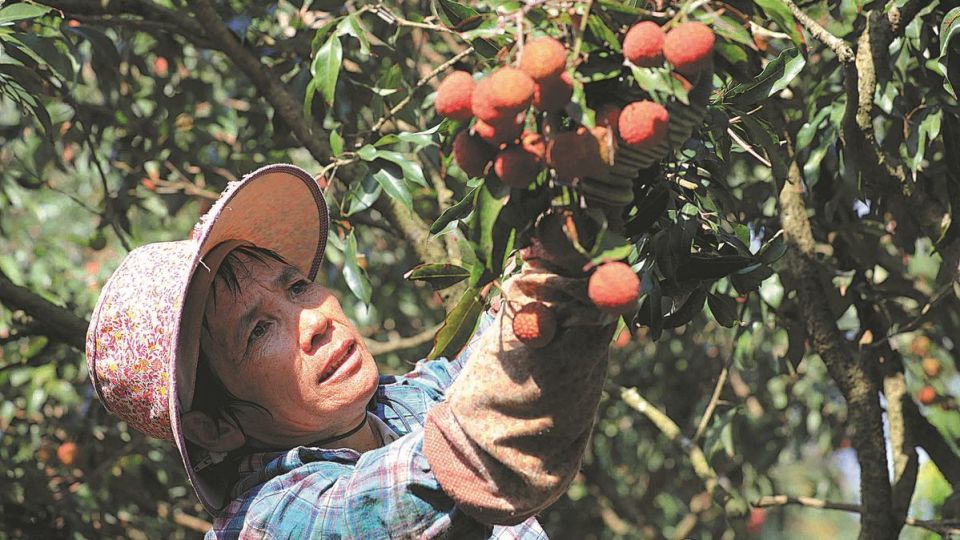June 21, 2022
BEIJING – Chinese scientists have made several breakthroughs in the cultivation of seedless lychees that are expected to boost production efficiency and reduce costs, the Chinese Academy of Tropical Agricultural Sciences said.
The world’s only seedless lychee variety, first bred in South China’s Hainan province in 1997, has a reddish-pink color, crystal-clear flesh and a unique flavor compared with the traditional lychee variety feizixiao, according to Gao Zhaoyin, an expert of the academy’s lychee and longan research team.
Due to a poor harvest this year, a single box of 48 seedless lychees, mainly produced in Hainan and Fujian province, sells for as much as 550 yuan ($82), over double than in a normal year.
“We sell from 500 to 1,000 boxes a day during the peak of the 15-day harvest season that starts in early June,” Gao said.
Although seedless lychees are more expensive than the traditional variety, they normally sell out fast because of limited production.
Seedless lychee cultivation has encountered obstacles such as bloom failure in warm winters and fruit cracking or prematurely falling from the branch. More than 40 percent-and sometimes 90 percent-of the fruit is lost before harvest each year, greatly affecting the economic efficiency of the plantation.
Many fruit enterprises and farmers in Hainan gave up growing the seedless variety, and the plantation volume has been shrinking over the past decade. Currently, the total plantation of seedless lychees in the province covers 467 hectares.
Gao said his team has successfully developed techniques to force flowering and prevent fruit from cracking and dropping from the tree too early, breaking the technical bottleneck of cultivating seedless lychees.
“We have been tackling the problems since 2013 and, despite the conditions, obtained stable yields this year on our demonstration base in Chengmai county,” he said.
The techniques have been applied on 13.3 hectares of farmland in a demonstration base in the county. This year, the average yield of the base reached 17 metric tons per hectare, with the rate of premature drop decreasing to 4.5 percent and 96.1 percent of the fruit having no cracks.
About 86.1 percent of the fruit can go to market, double the amount in 2013.
“The plantation area of seedless lychee will be increased to as much as 3,333 hectares in five years,” Gao said.
He added that the industry around seedless lychees in the province is expected to generate an annual economic benefit of 800 million yuan to 2 billion yuan.
“Hopefully, seedless lychees will be sold at 40 yuan per kilogram in the future when more people are available to buy the unique fruit at reasonable prices,” Gao said.


